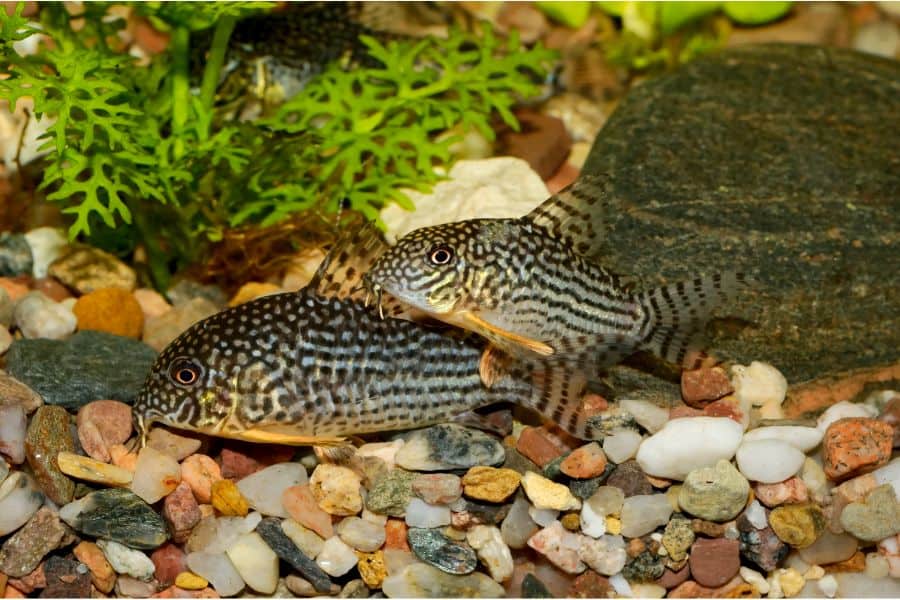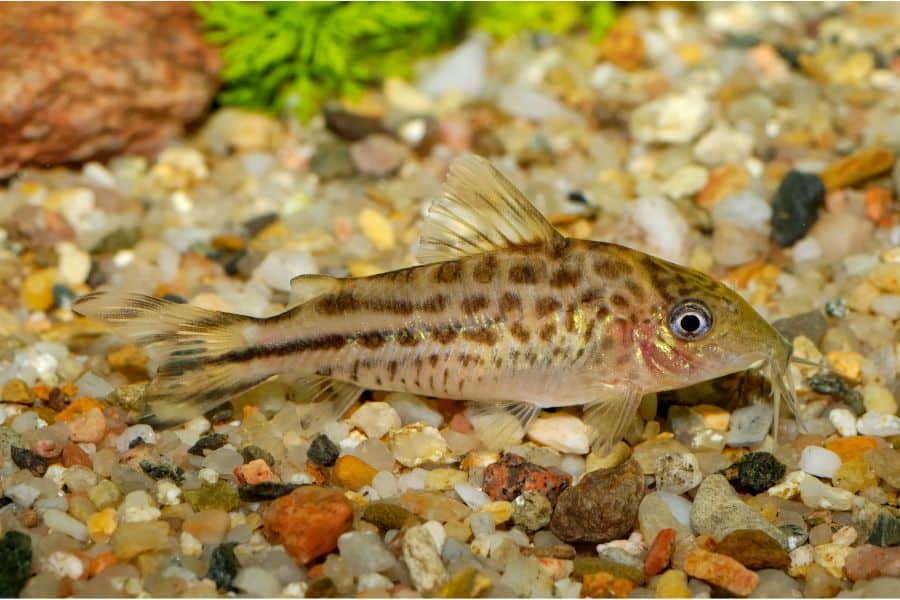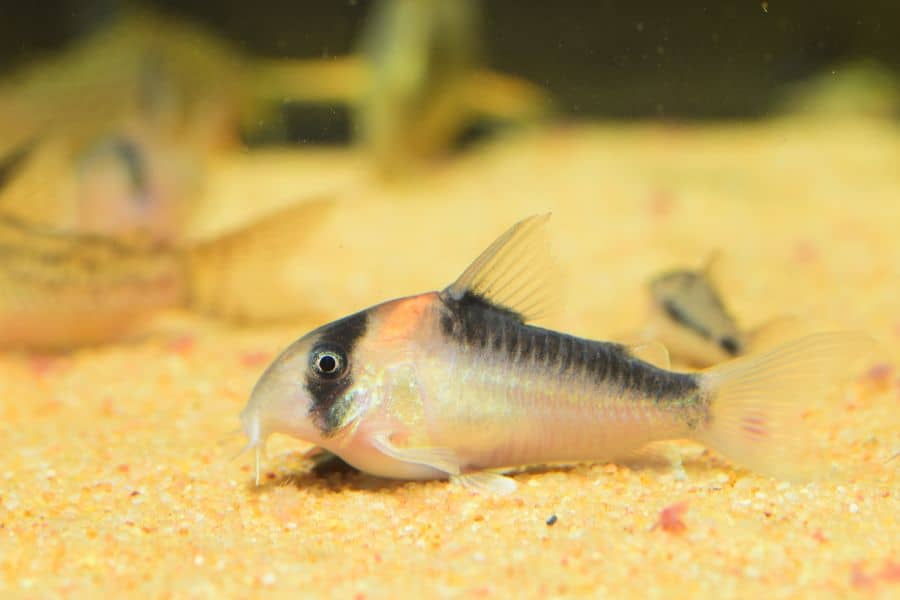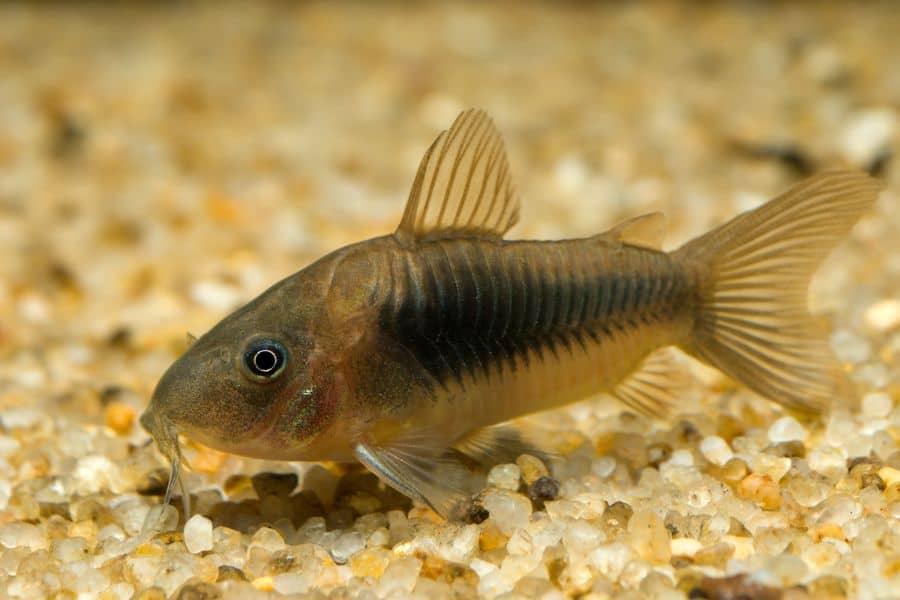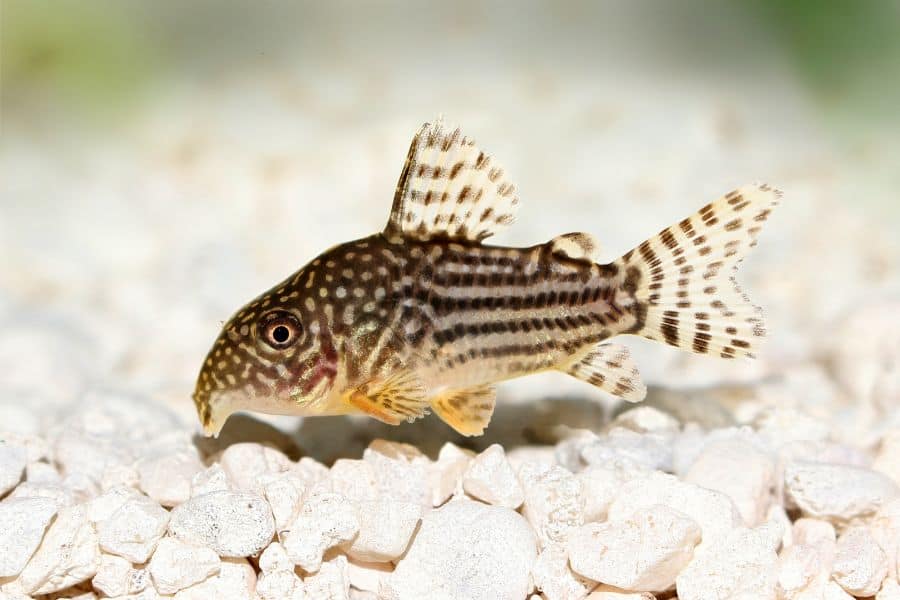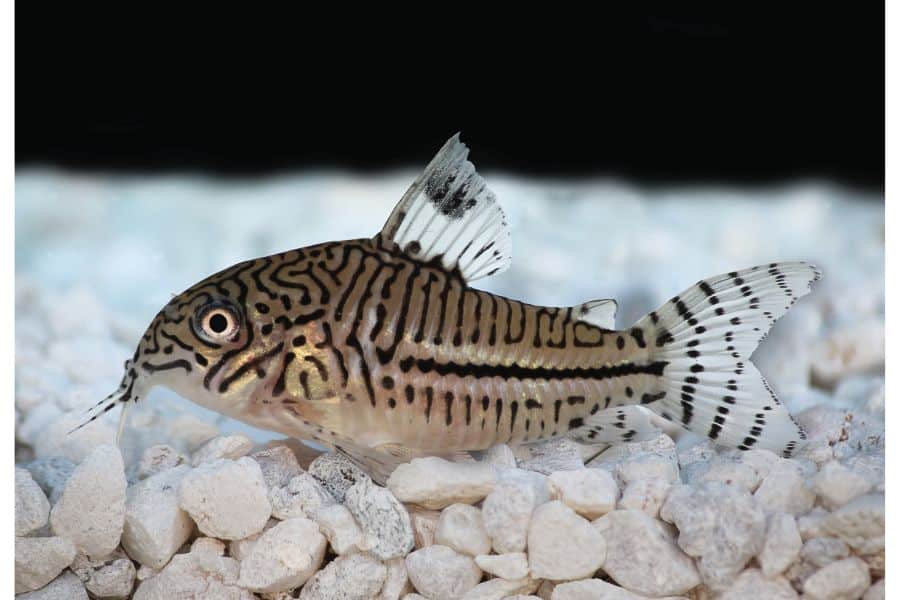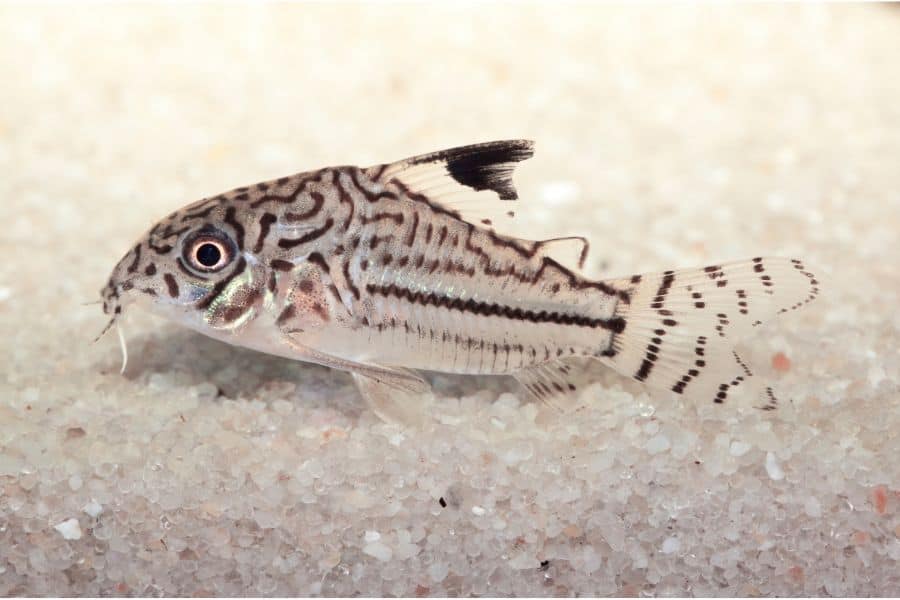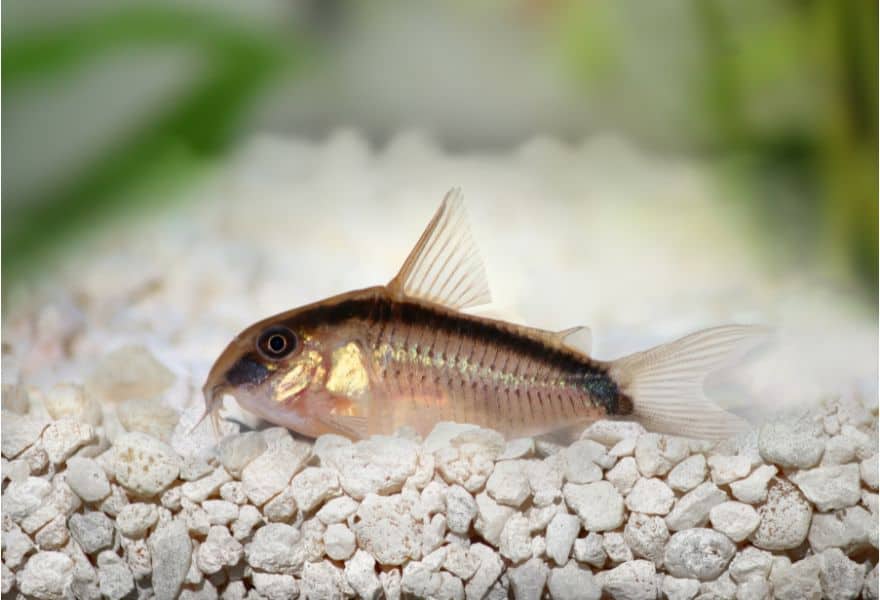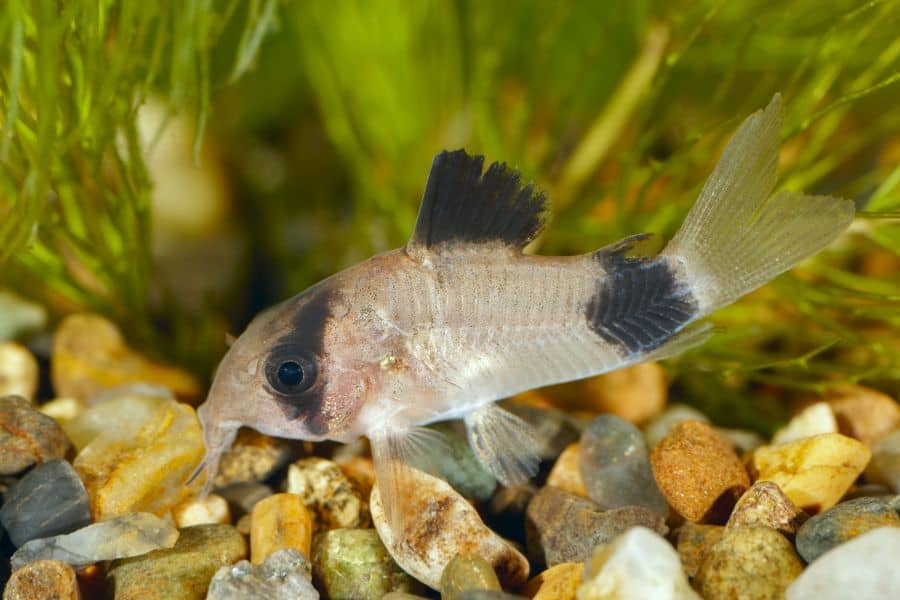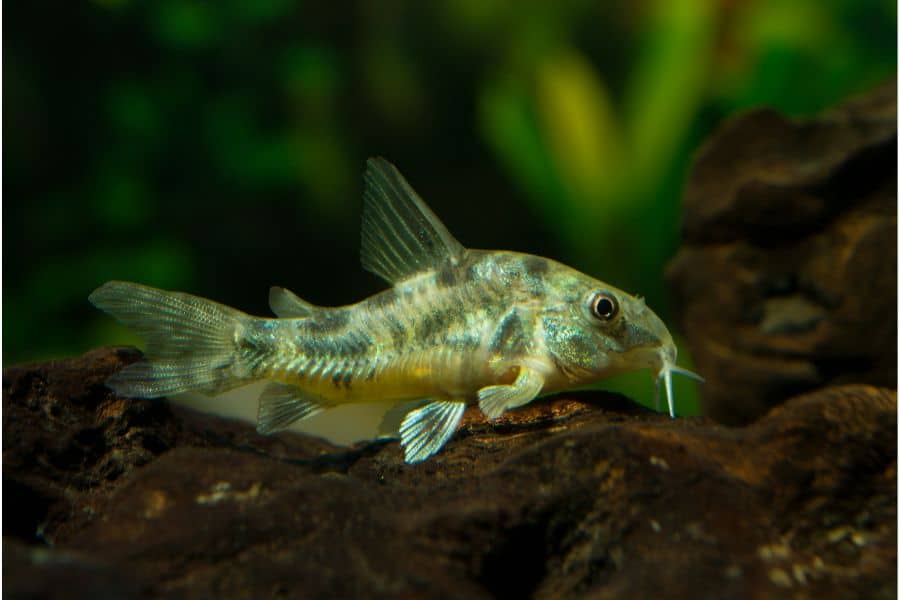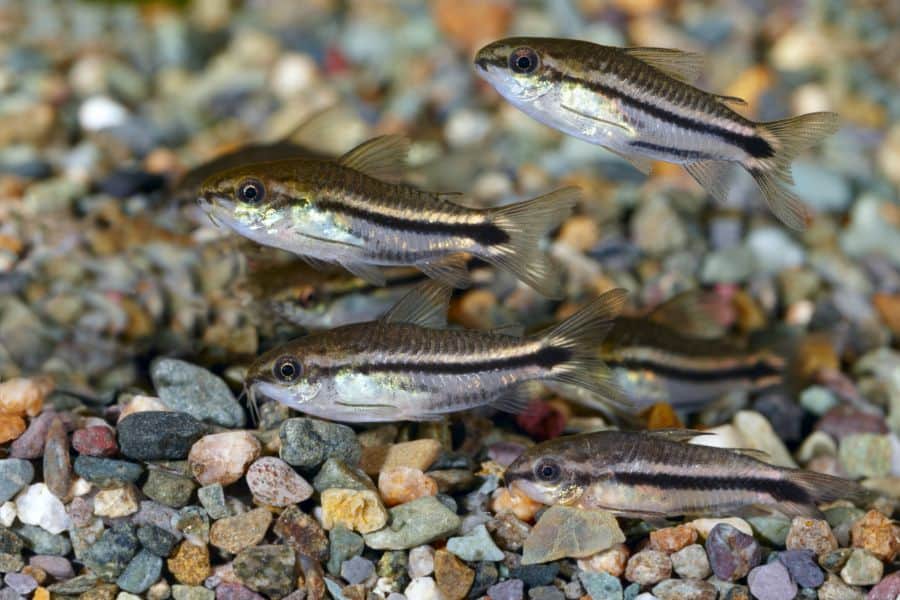There are over 160 recorded species of Corydoras catfish in the market today. There are many more candidates in line being put under scrutiny and peer scientific review awaiting to join the pack. This means that there may be more Corydoras out there that we do not know about.
Cory catfish is among the most popular fish in the freshwater aquarium trade, alongside other beloved options from the neon tetras to the guppies, betta fish, mollies, angelfish, rainbowfish, and golden dwarf barbs.
Read on to learn of the best Corydoras catfish varieties. The list takes you through the most attractive types with mesmerizing colors, to the easiest to care for breeds, and the most joyful species to keep in your tank.
What Is A Cory Catfish
The Cory catfish is part of the catfish family under order Siluriformes, all of which get their catfish name from the cat-like whiskers on their faces.
It is a tropical catfish species found in abundance in South America and parts of the Atlantic Ocean. It is known for its bony plates/scutes and three pairs of whisker-like sensory organs on its face. They also have overlapping scales and are freshwater fish.
The coloration of the Cory catfish varies among its 160-plus species, some of which include the bandit, Julii, Bronze, dwarf, albino, panda, orange, pepper, and three-stripe Cory. As you can tell, the Corydoras varieties are differentiated by their color, patterns, and complexion.
These hardy catfish come in different shapes and sizes, and are a good choice for beginner fish owners. Cory catfish typically feed at the bottom of the water, as they are considered bottom feeders. This makes them useful for cleaning tanks, but they should not be relied upon as the sole method of cleaning.
Their negative buoyancy enables them to swim backward and sink, rather than float, owing to their light gas bladders relative to their heavy heads. Their small size means they do not require a lot of food, and can be fed with a few minutes of small fish flakes and pellets.
For the best health, it is recommended to keep Cory catfish in groups of six or more, and their non-aggressive temperament makes them suitable for community tanks, although it is advised not to pair them with aggressively-behaved species.
Like most fish, Corydoras are egg-laying animals that are easy to breed. They are not picky about their partners but do require pair-bonding in order to procreate.
It is not hard to get a pair to bond especially if you go with the recommended tank mates: a group of six Cory catfish in one tank (98% chance of breeding) at a ratio of two/three males to one female.
The Cory pair are ready to breed at about 9 to 12 months of age and you can accelerate the process by feeding them live foods.
Females lay the eggs and the males fertilize them outside the female’s body. The fish spawn for a couple of hours after which you will find several eggs plastered all over the fish tank wall.
Whether caring for adult Cory fish or juveniles, it is recommended to have a tank of about 20 gallons or more. However, it is important to note that this will depend on the type of Cory you have since shorter fish like the Pygmy Corydoras can thrive on smaller tanks.
Read on to learn of the specific details care factors on these popular and common Corydoras Catfish.
Popular Types of Corydoras Catfish
1. Bandit Corydoras
| Common Names | Bandit cory, masked Corydoras, bandit catfish, meta river corydoras |
| Scientific Name | Corydoras metae |
| Average Adult Size | 2 inches |
| Lifespan | 4 – 5 years |
| Minimum Tank Size | 20 gallons |
| Ideal Temperatures | 72 – 79 degrees Fahrenheit |
| Ideal pH Levels | 6.5 – 7.0 |
As the name suggests, the bandit Cory is named because of its resemblance to a bandit. The fish has unique black bands running from gill to gill and from the head to the tail. A distinct black band stripes around its eyes and head from one side to the other, similar to the eye masks that real-life bandits wear.
The bandit Cory catfish is usually mistaken for the Corydoras melini, also known as the false bandit catfish. The real Bandit Cory Catfish, C. metae, is differentiated from the other bandit by the distinct presence of the black band at its back near the tail, C. melini has no band at the back. This will help you get the real bandit Cory in any store.
Bandit catfish have been in the market for many decades and have become the most recommended fish for those in need of a Cory. They are incredibly peaceful and thrive in a school of three other bandit Cory fish.
2. Bronze Corydoras
| Common Names | Green Corydoras, wavy catfish, bronze catfish, lightspot Corydoras, albino Bronze Cory, Albino Cory |
| Scientific Name | Corydoras aeneus |
| Average Adult Size | 2.5 – 2.75 inches |
| Lifespan | 10 years |
| Minimum Tank Size | 20 gallons |
| Ideal Temperatures | 71 – 79 degrees Fahrenheit |
| Ideal pH Levels | 6.0 – 8.0 |
Like many Cory catfish, the Bronze Cory originates from South America. It is known for its distinct bronze like color that is borrowed from the green Cory. The green Cory breeds to produce different color variations including albino, pink, and yellow, but the bronze remains its most striking variant.
The albino variant (also known as the Corydoras aenus albino/Albino Cory) is among the most common Cory but many mistake it for a different species.
The bronze Cory loves small crustaceans and worms as its main meals. However, as an omnivore, it is advisable to give it a wide variety of frozen foods, catfish flakes, live foods, and sinking pellets since they are bottom feeders.
3. Sterba’s Cory
| Common Names | Sterba’s catfish |
| Scientific Name | Corydoras sterbai |
| Average Adult Size | 2.6 inches |
| Lifespan | 15 – 20 years |
| Minimum Tank Size | 20 gallons |
| Ideal Temperatures | 72 – 80 degrees Fahrenheit |
| Ideal pH Levels | 6.5 – 8.0 |
Sterba’s Cory is perfect for those who want to have an attractive aquarium with unique colors. The mesmerizing markings on this Corydoras catfish are hard to find. They are unique from any catfish markings.
The body of the Sterba is made of a black base color that is spotted with white spots from the head to the fins, torso, and tail. Some variants may have an albino hue or more intense black colors, but its impressive white spots are present in all.
They have a bigger lifespan than that of the Bronze Cory at around 15-20 years compared to the 10. However, it is important to note that most intense colored Cory fish are given color-enhancing supplements that can lower their lifespan.
4. Three Stripe Cory
| Common Names | Leopard catfish, false julii Corydoras, three-line catfish |
| Scientific Name | Corydoras trilineatus |
| Average Adult Size | 2.5 inches |
| Lifespan | 10 years |
| Minimum Tank Size | 20 gallons |
| Ideal Temperatures | 72 – 79 degrees Fahrenheit |
| Ideal pH Levels | 5.8 – 7.8 |
The color patterns on the three stripe Cory fish are reminiscent of a leopard’s color hue. The fish has a pale gray or silver-like background and a distinctly dark stripe running along the lateral line on both sides.
The upper and lower side of the stripe is a pale gray space without any spots, but all other parts of the fish’s body are populated with leopard-like spots and stripes.
The tail of the fish is characterized by transparent caudal fins that display a series of dark spots, arranged in vertical stripes. On the other hand, the dorsal fin lacks color and instead features a prominent black spot on its upper section. The adipose and anal fins are transparent as well and decorated with a line of spots.
5. Corydoras Julii
| Common Names | Julii cory |
| Scientific Name | Corydoras julii |
| Average Adult Size | 2 – 2.5 inches |
| Lifespan | 5 – 8 years |
| Minimum Tank Size | 20 gallons |
| Ideal Temperatures | 72 – 79 degrees Fahrenheit |
| Ideal pH Levels | 6.5 – 8.0 |
Corydoras julii are an easy species to care for with the proper diet, preferably sinking pellets, live foods like bloodworms & brine shrimp, and daphnia.
Corydoras julii’s body is silvery gray. A dark zigzag stripe runs along the lateral line from the gills to the tail. Above and below this dark line is a section that is not spotted, beyond which are many small dark spots of varying size.
On the body, some of these spots connect to form short lines, but on the head, the spots are distinctly separate, a feature that differentiates this species.
The dorsal fin is transparent with a large black blotch on the upper fin that does not extend down into the body. The caudal fin has vertical rows of dark brown spots that give the appearance of striping.
The anal, adipose, pectoral, and ventral fins also have these spots, but they are much paler in color than on the caudal fin.
6. Skunk Cory
| Common Names | Skunk catfish |
| Scientific Name | Corydoras arcuatus |
| Average Adult Size | 2 – 2.2 inches |
| Lifespan | 5 – 8 years |
| Minimum Tank Size | 20 gallons |
| Ideal Temperatures | 72 – 79 degrees Fahrenheit |
| Ideal pH Levels | 6.8 – 8.0 |
As its name suggests, the Skunk Cory is named after its black and white color combo.
The Skunk Cory features a predominantly white or almost translucent body and fins. Its distinguishing characteristic is a conspicuous black stripe running on both sides of the dorsal ridge from the mouth to the tail. The eyes, usually black, are located within the striped area of the body.
7. Panda Corydoras
| Common Names | Panda catfish |
| Scientific Name | Corydoras panda |
| Average Adult Size | 2 inches |
| Lifespan | 8 – 10 years |
| Minimum Tank Size | 20 gallons |
| Ideal Temperatures | 72 – 79 degrees Fahrenheit |
| Ideal pH Levels | 6.8 – 7.8 |
Panda Corydoras or Corydoras Panda is native to Peru and Ecuador. It is popular for its panda-like black spots on a pale body. The background is not as white as a real panda but more of pale pink or off-white.
The black spots/markings are three with the first being located in the head over the eyes, the second covering the dorsal fin and the third located at the base of the fish’s tail.
8. Peppered Cory
| Common Names | Peppered catfish |
| Scientific Name | Corydoras paleatus |
| Average Adult Size | 2.5 inches |
| Lifespan | 5 – 7 years |
| Minimum Tank Size | 20 gallons |
| Ideal Temperatures | 72 – 79 degrees Fahrenheit |
| Ideal pH Levels | 6.5 – 8.0 |
Hobbyists consider the peppered Cory as the most laid-back Cory. They are also fun to have around because of their ‘winking’ motions that make them even more adorable.
The body hue ranges from pale olive to tan, highlighted by a shimmering green luster. The body features an intricate design of dark green-black markings that is unique to each individual.
The fins are notably lighter in color, with a distinctive dark blotch on the first few rays of the dorsal fin, and the caudal fin displays scattered tiny spots
9. Pygmy Corydoras
| Common Names | Pygmy catfish |
| Scientific Name | Corydoras pygmaeus |
| Average Adult Size | 2.5 |
| Lifespan | Below 1.5 inches |
| Minimum Tank Size | 10 gallons |
| Ideal Temperatures | 72 – 79 degrees Fahrenheit |
| Ideal pH Levels | 5.8 – 6.8 |
The Pigmy Cory is the smallest catfish you will usually find on the market. It rarely grows past 1.5 inches and can thrive in smaller environments compared to other Cory fish.
The fish appears silver in color and features an unbroken black line that stretches horizontally from the snout tip to the caudal peduncle.
Additionally, a slender black line is present along the lower portion of its body, beginning behind the ventral fins and continuing towards the tail.
Also Read:
Honorable Mentions
There are many more attractive fish you may want to look at depending on your color preference and how attractive you want your aquarium to look. Here are other options to consider:
- Delphax Cory
- Dwarf Corydoras
- Barbatus Cory/Bearded Cory
- Hognose Brochis
- Longfin Panda
- Black Cory
- Habrosus
- Paleatus
- Emerald
FAQs
What Is the Most Common Corydora?
The common Corydoras include the bronze Cory (Albino Corydoras/Corydoras aeanus). A close second is the Peppered Cory. You are bound to see these species in many stores and fish tanks all over the world.
Albino Corydoras (the Green Cory variant) are also popular with a low price of about $3.00 – $6.00. They are easy to breed and even easier to care for.
However, it is important to note that their abundance is common in captivity and not in the wild (their light coloration makes them easy prey for predators in the wild).
What Is the Rarest Cory?
The rarest Corydoras in the wild include the Albino Cory and pygmy Cory. However, in captivity, rare Corydoras include the Inka Cory, robust Cory, Vulcan Cory, and Gold Stripe Cory Catfish, all of which cost more than $40. The black Cory is also rare, like most black-variants of any type of fish.
